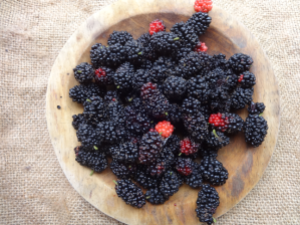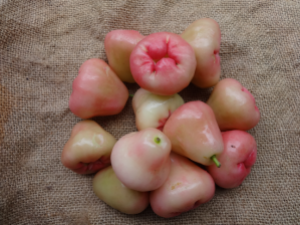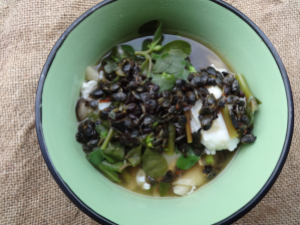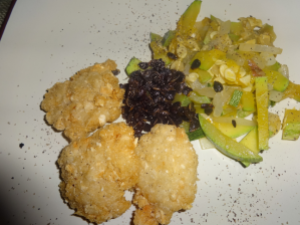 Happy Sunday to you all!! We have some more fruit on our farm; luckily this time, there is an abundance so we can share with the birdies, pacas, dogs and guinea-pigs.
Happy Sunday to you all!! We have some more fruit on our farm; luckily this time, there is an abundance so we can share with the birdies, pacas, dogs and guinea-pigs.
The mulberries are giving plenty of fruit. There is one particular tree which is half hidden in the shade of a huge African oil palm so the birdies have not spotted this one. This year, we will be able to make mulberry Elixir (liqueur).

This is wax-apple; we are into the second year of fruiting and it is producing so much. They are related to the Molly (Malay) apple but these fruits are crunchy in texture like apples. The guinea-pigs really love these ones!

The passionfruit are just starting to bear. I like to combine the pulp of this with the Mayan passionfruit (Kun Batz) to make juice. I find the Mayan variety is sweeter so that it helps to balance the acidity of this type.


With all the passionfruit juice making, I have ended up with a whole lot of seeds. As an experiment, I tried toasting them on a skillet in a similar manner to pumpkin seeds. They actually turned out to be a very tasty snack/condiment; as you toast them, the residual passionfruit pulp around the seeds caramelises to add a unique sweetness. I used the toasted seeds as a condiment on soup which worked a treat. The crunchy texture gives an extra bite to a meal:

Also, we had some as an accompaniment to cassava hash browns and steamed young pumpkin. They added an extra “sweet and sour” flavour to the dish.

I would definitely recommend the toasting of passionfruit seeds. It just requires 10 to 15 minutes on medium heat on a skillet. Make sure to stir it around to stop it from initially sticking. You will know when it is done when the pulp caramelises around the seeds. It is so versatile that you can choose to eat it with sweet or savoury foods.

Hope everyone is having a relaxing Sunday night!








